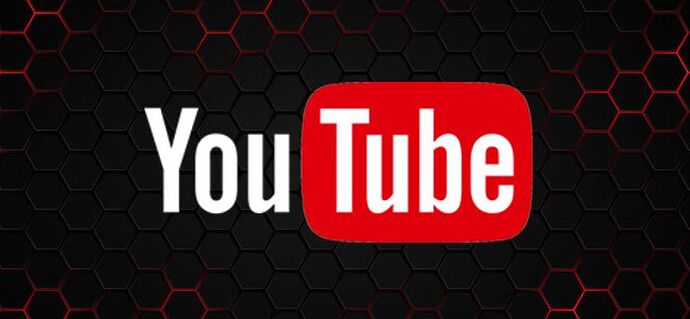How big is YouTube?
I got interested in this question a few years ago, when I started writing about the “denominator problem”. A great deal of social media research focuses on finding unwanted behavior – mis/disinformation, hate speech – on platforms. This isn’t that hard to do: search for “white genocide” or “ivermectin” and count the results. Indeed, a lot of eye-catching research does just this – consider Avaaz’s August 2020 report about COVID misinformation. It reports 3.8 billion views of COVID misinfo in a year, which is a very big number. But it’s a numerator without a denominator – Facebook generates dozens or hundreds of views a day for each of its 3 billion users – 3.8 billion views is actually a very small number, contextualized with a denominator.
A few social media platforms have made it possible to calculate denominators. Reddit, for many years, permitted Pushshift to collect all Reddit posts, which means we can calculate what a small fraction of Reddit is focused on meme stocks or crypto, versus conversations about mental health or board gaming. Our Redditmap.social platform – primarily built by Virginia Partridge and Jasmine Mangat – is based around the idea of looking at the platform as a whole and understanding how big or small each community is compared to the whole. Alas, Reddit cut off public access to Pushshift this summer, so Redditmap.social can only use data generated early this year.
Twitter was also a good platform for studying denominators, because it created a research API that took a statistical sample of all tweets and gave researchers access to every 10th or 100th one. If you found 2500 tweets about ivermectin a day, and saw 100m tweets through the decahose (which gave researchers 1/10th of tweet volume), you could calculate an accurate denominator (100m x 10) (All these numbers are completely made up.) Twitter has cut off access to these excellent academic APIs and now charges massive amounts of money for much less access, which means that it’s no longer possible for most researchers to do denominator-based work.
Interesting as Reddit and Twitter are, they are much less widely used than YouTube, which is used by virtually all internet users. Pew reports that 93% of teens use YouTube – the closest service in terms of usage is Tiktok with 63% and Snapchat with 60%. While YouTube has a good, well-documented API, there’s no good way to get a random, representative sample of YouTube. Instead, most research on YouTube either studies a collection of videos (all videos on the channels of a selected set of users) or videos discovered via recommendation (start with Never Going to Give You Up, objectively the center of the internet, and collect recommended videos.) You can do excellent research with either method, but you won’t get a sample of all YouTube videos and you won’t be able to calculate the size of YouTube.
I brought this problem to Jason Baumgartner, creator of PushShift, and prince of the dark arts of data collection. One of Jason’s skills is a deep knowledge of undocumented APIs, ways of collecting data outside of official means. Most platforms have one or more undocumented APIs, widely used by programmers for that platform to build internal tools. In the case of YouTube, that API is called “Inner Tube” and its existence is an open secret in programmer communities. Using InnerTube, Jason suggested we do something that’s both really smart and really stupid: guess at random URLs and see if there are videos there.
Here’s how this works: YouTube URLs look like this: https://www.youtube.com/ watch?v=vXPJVwwEmiM
That bit after “watch?v=” is an 11 digit string. The first ten digits can be a-z,A-Z,0-9 and _-. The last digit is special, and can only be one of 16 values. Turns out there are 2^64 possible YouTube addresses, an enormous number: 18.4 quintillion. There are lots of YouTube videos, but not that many. Let’s guess for a moment that there are 1 billion YouTube videos – if you picked URLs at random, you’d only get a valid address roughly once every 18.4 billion tries.
We refer to this method as “drunk dialing”, as it’s basically as sophisticated as taking swigs from a bottle of bourbon and mashing digits on a telephone, hoping to find a human being to speak to. Jason found a couple of cheats that makes the method roughly 32,000 times as efficient, meaning our “phone call” connects lots more often. Kevin Zheng wrote a whole bunch of scripts to do the dialing, and over the course of several months, we collected more than 10,000 truly random YouTube videos.
There’s lots you can do once you’ve got those videos. Ryan McCarthy is lead author on our paper in the Journal of Quantitative Description, and he led the process of watching a thousand of these videos and hand-coding them, a massive and fascinating task. Kevin wired together his retrieval scripts with a variety of language detection systems, and we now have a defensible – if far from perfect – estimate of what languages are represented on YouTube. We’re starting some experiments to understand how the videos YouTube recommends differ from the “average” YouTube video – YouTube likes recommending videos with at least ten thousand views, while the median YouTube video has 39 views.
I’ll write at some length in the future about what we can learn from a true random sample of YouTube videos. I’ve been doing a lot of thinking about the idea of “the quotidian web”, learning from the bottom half of the long tail of user-generated media so we can understand what most creators are doing with these tools, not just from the most successful influencers. But I’m going to limit myself to the question that started this blog post: how big is YouTube?
